-
 Bitcoin
Bitcoin $106,754.6083
1.33% -
 Ethereum
Ethereum $2,625.8249
3.80% -
 Tether USDt
Tether USDt $1.0001
-0.03% -
 XRP
XRP $2.1891
1.67% -
 BNB
BNB $654.5220
0.66% -
 Solana
Solana $156.9428
7.28% -
 USDC
USDC $0.9998
0.00% -
 Dogecoin
Dogecoin $0.1780
1.14% -
 TRON
TRON $0.2706
-0.16% -
 Cardano
Cardano $0.6470
2.77% -
 Hyperliquid
Hyperliquid $44.6467
10.24% -
 Sui
Sui $3.1128
3.86% -
 Bitcoin Cash
Bitcoin Cash $455.7646
3.00% -
 Chainlink
Chainlink $13.6858
4.08% -
 UNUS SED LEO
UNUS SED LEO $9.2682
0.21% -
 Avalanche
Avalanche $19.7433
3.79% -
 Stellar
Stellar $0.2616
1.64% -
 Toncoin
Toncoin $3.0222
2.19% -
 Shiba Inu
Shiba Inu $0.0...01220
1.49% -
 Hedera
Hedera $0.1580
2.75% -
 Litecoin
Litecoin $87.4964
2.29% -
 Polkadot
Polkadot $3.8958
3.05% -
 Ethena USDe
Ethena USDe $1.0000
-0.04% -
 Monero
Monero $317.2263
0.26% -
 Bitget Token
Bitget Token $4.5985
1.68% -
 Dai
Dai $0.9999
0.00% -
 Pepe
Pepe $0.0...01140
2.44% -
 Uniswap
Uniswap $7.6065
5.29% -
 Pi
Pi $0.6042
-2.00% -
 Aave
Aave $289.6343
6.02%
The lower track of the rising channel breaks through: is the medium-term trend over?
A rising channel breakdown in crypto signals potential trend weakness, but confirmation through volume, candlestick patterns, and key indicators is crucial before assuming a full reversal.
Jun 12, 2025 at 11:00 pm
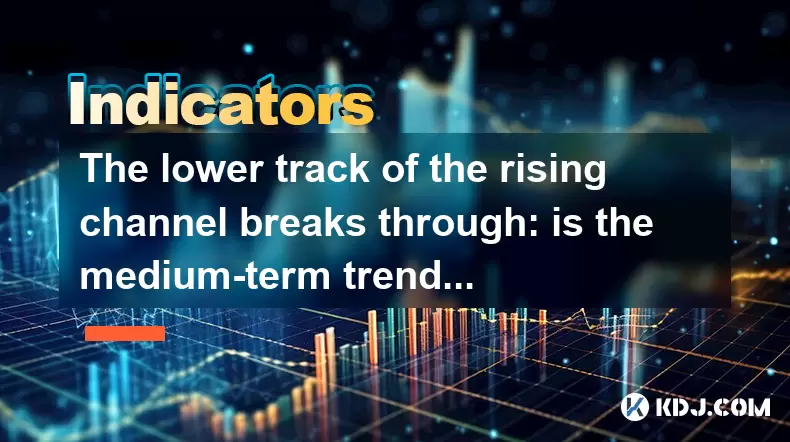
Understanding the Rising Channel in Cryptocurrency Trading
In technical analysis, a rising channel is formed by drawing two parallel lines that connect a series of higher lows and higher highs. This pattern typically indicates a bullish trend where buyers are consistently pushing prices upward. The upper line acts as resistance, while the lower line serves as support.
When analyzing cryptocurrencies like Bitcoin or Ethereum, traders often rely on rising channels to predict potential price movements. These patterns are especially useful in volatile markets where trends can shift quickly. The key to understanding them lies in identifying when the price breaks out or breaks down from these boundaries.
The lower track, or support line, is crucial because it represents the minimum level buyers are willing to pay before pushing the price back up. A break below this level may signal weakening demand or increased selling pressure. However, not every breach leads to a reversal — sometimes it's just a temporary dip before the trend resumes.
Important Note: Before concluding any trend change, always confirm the break with volume and other indicators.
What Happens When the Lower Track Breaks?
A break below the lower boundary of a rising channel suggests that sellers have taken control temporarily. In crypto trading, such a move can trigger stop-loss orders and further accelerate the decline. But this doesn't necessarily mean the entire uptrend is invalidated.
Traders should look for confirmation signals such as:
- Candlestick Patterns: Bearish reversals like shooting stars or engulfing candles near the broken support.
- Volume Spikes: A sharp increase in trading volume during the breakout can indicate strong institutional involvement.
- Moving Average Crossovers: Short-term moving averages crossing below long-term ones (e.g., 50-day below 200-day) could reinforce the downtrend.
If the price fails to re-enter the channel within a few candlesticks, it’s likely that the previous uptrend has ended or entered a consolidation phase. This is particularly important in highly leveraged markets like crypto, where sentiment shifts rapidly based on macroeconomic news or regulatory changes.
Historical Examples of Channel Breakdowns in Crypto
Looking at past cycles provides valuable insights into how cryptocurrencies behave after breaking a rising channel. For instance, during the 2017 bull run, Bitcoin formed multiple ascending channels. After each major breakout from the lower bound, there was a short-term correction followed by either a continuation of the trend or a full reversal depending on market conditions.
In early 2021, Ether broke below its rising channel during a sharp correction but quickly regained support and continued its rally. This shows that even if the lower track is breached, the medium-term trend isn’t automatically over. What matters more is whether the broken support turns into resistance and how subsequent price action reacts around that level.
Key takeaways from historical data:
- Short-Term vs Long-Term Impact: A breakdown might only affect short-term momentum rather than the broader cycle.
- Psychological Levels: If the price drops below a major round number (e.g., $30,000 for BTC), panic selling may occur.
- Market Context: Broader market conditions, such as Fed policy or exchange regulations, play a significant role in determining trend longevity.
How to Confirm Whether the Medium-Term Trend Is Over
To determine if the medium-term trend has ended after a lower channel break, traders must go beyond simple chart patterns and incorporate multiple layers of analysis:
- Fibonacci Retracement Levels: Check if the drop aligns with key Fibonacci levels (like 38.2% or 50%).
- Relative Strength Index (RSI): If RSI dips below 30 and starts climbing again, it could indicate oversold conditions and a potential bounce.
- On-Chain Metrics: Analyze metrics like network value to transaction ratio (NVT) or exchange inflows/outflows for deeper insight.
- Derivatives Market: Open interest and funding rates in futures markets can show whether bears are gaining strength or bulls are still holding.
By combining these tools, traders can better assess whether the break is a false signal or a genuine shift in market dynamics. It’s also essential to monitor order books and liquidity depth to understand where large players are positioning themselves.
Strategies for Trading After a Lower Channel Break
Once a lower channel boundary is broken, traders can adopt several strategies depending on their risk tolerance and time horizon:
- Short-Selling Opportunities: For aggressive traders, entering short positions with tight stops can be profitable if the price continues downward.
- Wait-and-Watch Approach: Conservative traders may prefer waiting for a retest of the broken support-turned-resistance before taking any action.
- Hedging Existing Positions: Using options or inverse ETFs to protect gains without fully exiting the market.
- Portfolio Rebalancing: Reducing exposure to high-beta altcoins and rotating into safer assets like stablecoins or blue-chip cryptos.
Each strategy requires careful planning and execution. Traders should set clear entry and exit points, use proper position sizing, and avoid emotional decision-making during volatile periods.
Frequently Asked Questions
Q: Can a rising channel still be valid after a brief break of the lower boundary?
Yes, a brief break without strong confirmation (such as high volume or bearish candlesticks) may not invalidate the channel. Traders often wait for a close above the lower trendline before reassessing the trend.
Q: How long does a broken rising channel remain relevant for analysis?
Typically, the relevance diminishes after 2–3 candlesticks fail to reclaim the broken support. However, in longer timeframes like weekly charts, the channel may still influence price behavior months later.
Q: Should I close all long positions immediately after a lower channel break?
Not necessarily. It depends on your overall strategy and risk management plan. Some traders reduce exposure gradually, while others wait for additional signals before making moves.
Q: Are rising channels more reliable in certain cryptocurrencies?
They tend to work better in larger, more liquid cryptos like Bitcoin and Ethereum due to stronger institutional participation and clearer trend formation. Altcoins with low volume may produce unreliable patterns.
Disclaimer:info@kdj.com
The information provided is not trading advice. kdj.com does not assume any responsibility for any investments made based on the information provided in this article. Cryptocurrencies are highly volatile and it is highly recommended that you invest with caution after thorough research!
If you believe that the content used on this website infringes your copyright, please contact us immediately (info@kdj.com) and we will delete it promptly.
- 2025-W Uncirculated American Gold Eagle and Dr. Vera Rubin Quarter Mark New Products
- 2025-06-13 06:25:13
- Ruvi AI (RVU) Leverages Blockchain and Artificial Intelligence to Disrupt Marketing, Entertainment, and Finance
- 2025-06-13 07:05:12
- H100 Group AB Raises 101 Million SEK (Approximately $10.6 Million) to Bolster Bitcoin Reserves
- 2025-06-13 06:25:13
- Galaxy Digital CEO Mike Novogratz Says Bitcoin Will Replace Gold and Go to $1,000,000
- 2025-06-13 06:45:13
- Trust Wallet Token (TWT) Price Drops 5.7% as RWA Integration Plans Ignite Excitement
- 2025-06-13 06:45:13
- Ethereum (ETH) Is in the Second Phase of a Three-Stage Market Cycle
- 2025-06-13 07:25:13
Related knowledge
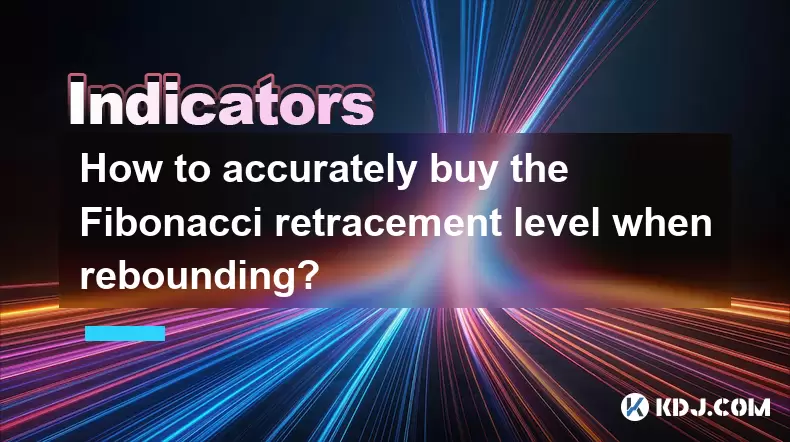
How to accurately buy the Fibonacci retracement level when rebounding?
Jun 16,2025 at 09:56pm
Understanding the Fibonacci Retracement ToolThe Fibonacci retracement is a popular technical analysis tool used by traders to identify potential support and resistance levels. It is based on the idea that markets will retrace a predictable portion of a move before continuing in the original direction. The key Fibonacci levels are typically 23.6%, 38.2%,...

How to set the stop profit point after the high-level propeller pattern?
Jun 16,2025 at 08:04pm
Understanding the High-Level Propeller PatternThe high-level propeller pattern is a technical analysis formation often observed in cryptocurrency trading charts. It typically appears at significant price peaks and signals potential reversals. The pattern consists of a large candlestick with long upper and lower shadows, resembling a propeller, indicatin...

When is the most reasonable stop loss after the three crows pattern?
Jun 16,2025 at 08:14pm
Understanding the Three Crows Pattern in Cryptocurrency TradingThe three crows pattern is a well-known bearish reversal signal in technical analysis, particularly relevant in volatile markets like cryptocurrency. It typically appears at the end of an uptrend and consists of three consecutive long red (or bearish) candles with progressively lower closes....
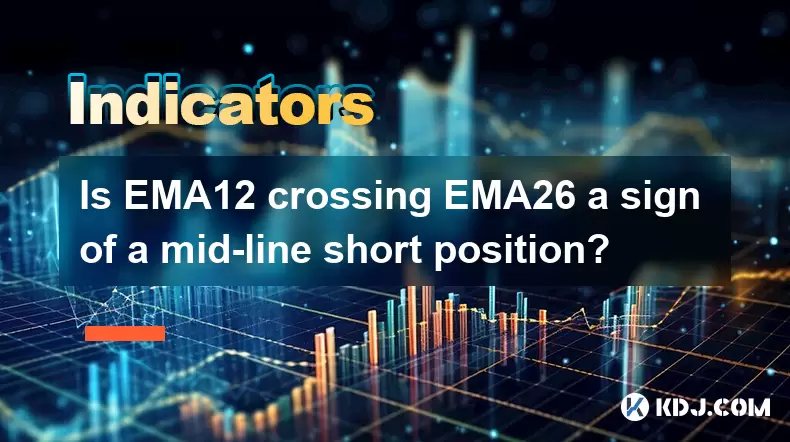
Is EMA12 crossing EMA26 a sign of a mid-line short position?
Jun 16,2025 at 07:22pm
Understanding EMA12 and EMA26 in Cryptocurrency TradingIn the world of cryptocurrency trading, Exponential Moving Averages (EMAs) are widely used tools for analyzing price trends. Specifically, the EMA12 and EMA26 are two of the most commonly referenced EMAs among traders. The EMA12 represents a short-term moving average calculated over the past 12 time...
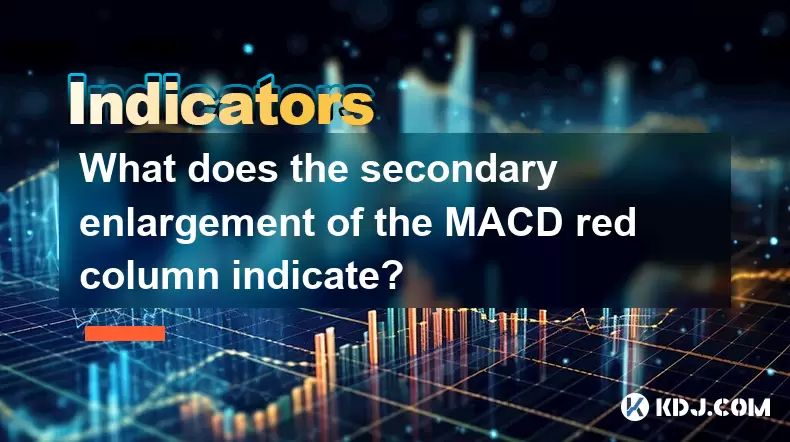
What does the secondary enlargement of the MACD red column indicate?
Jun 16,2025 at 07:49pm
Understanding the MACD Indicator and Its ComponentsThe Moving Average Convergence Divergence (MACD) is a widely used technical analysis tool in cryptocurrency trading. It consists of three main components: the MACD line, the signal line, and the MACD histogram. The histogram, represented as red or green bars, reflects the difference between the MACD lin...
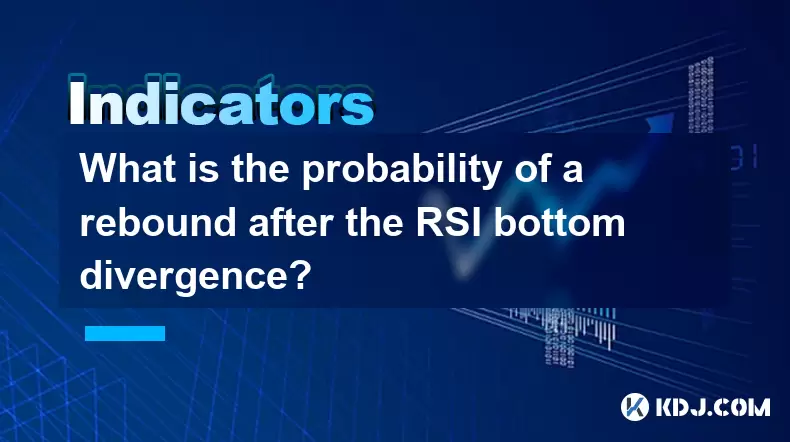
What is the probability of a rebound after the RSI bottom divergence?
Jun 16,2025 at 06:50pm
Understanding RSI Bottom Divergence in Cryptocurrency TradingThe Relative Strength Index (RSI) is a widely used momentum oscillator in technical analysis, particularly within the cryptocurrency market. It helps traders identify overbought or oversold conditions and potential reversal points. A bottom divergence occurs when the price of an asset makes a ...

How to accurately buy the Fibonacci retracement level when rebounding?
Jun 16,2025 at 09:56pm
Understanding the Fibonacci Retracement ToolThe Fibonacci retracement is a popular technical analysis tool used by traders to identify potential support and resistance levels. It is based on the idea that markets will retrace a predictable portion of a move before continuing in the original direction. The key Fibonacci levels are typically 23.6%, 38.2%,...

How to set the stop profit point after the high-level propeller pattern?
Jun 16,2025 at 08:04pm
Understanding the High-Level Propeller PatternThe high-level propeller pattern is a technical analysis formation often observed in cryptocurrency trading charts. It typically appears at significant price peaks and signals potential reversals. The pattern consists of a large candlestick with long upper and lower shadows, resembling a propeller, indicatin...

When is the most reasonable stop loss after the three crows pattern?
Jun 16,2025 at 08:14pm
Understanding the Three Crows Pattern in Cryptocurrency TradingThe three crows pattern is a well-known bearish reversal signal in technical analysis, particularly relevant in volatile markets like cryptocurrency. It typically appears at the end of an uptrend and consists of three consecutive long red (or bearish) candles with progressively lower closes....

Is EMA12 crossing EMA26 a sign of a mid-line short position?
Jun 16,2025 at 07:22pm
Understanding EMA12 and EMA26 in Cryptocurrency TradingIn the world of cryptocurrency trading, Exponential Moving Averages (EMAs) are widely used tools for analyzing price trends. Specifically, the EMA12 and EMA26 are two of the most commonly referenced EMAs among traders. The EMA12 represents a short-term moving average calculated over the past 12 time...

What does the secondary enlargement of the MACD red column indicate?
Jun 16,2025 at 07:49pm
Understanding the MACD Indicator and Its ComponentsThe Moving Average Convergence Divergence (MACD) is a widely used technical analysis tool in cryptocurrency trading. It consists of three main components: the MACD line, the signal line, and the MACD histogram. The histogram, represented as red or green bars, reflects the difference between the MACD lin...

What is the probability of a rebound after the RSI bottom divergence?
Jun 16,2025 at 06:50pm
Understanding RSI Bottom Divergence in Cryptocurrency TradingThe Relative Strength Index (RSI) is a widely used momentum oscillator in technical analysis, particularly within the cryptocurrency market. It helps traders identify overbought or oversold conditions and potential reversal points. A bottom divergence occurs when the price of an asset makes a ...
See all articles

























































































